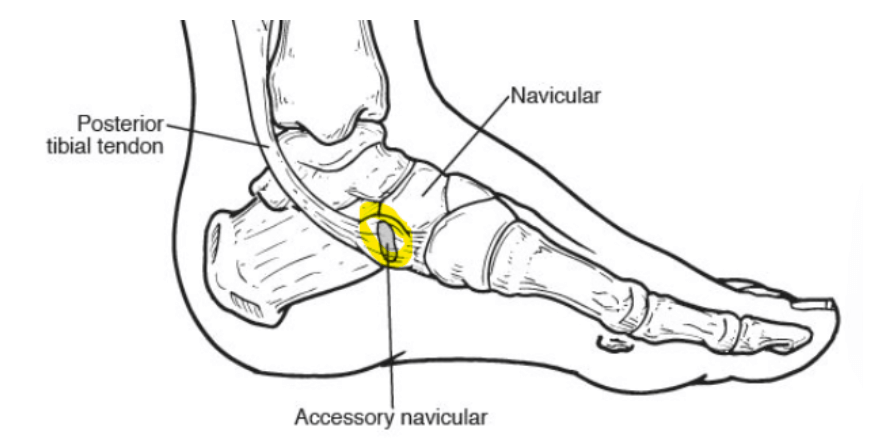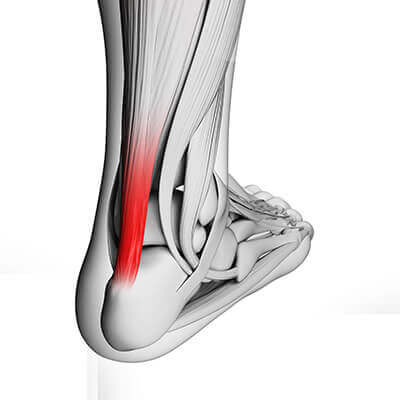podiatrist issaquah
Displaying items by tag: podiatrist issaquah
Dr. Timothy Young, a Board-Certified Foot Surgeon, Discusses Children's Foot Problems
This attachment point can be overstressed with a pronated low arch foot structure. Basically the tendon has to work too hard and there can be pain and inflammation with the tendon attaches to the navicular. In other cases the tendon attaches to the accessory navicular bone which then attaches to the main navicular bone. This weakens the attachment point and creates more potential problems. In some cases, the accessory navicular has to be removed. This foot surgery procedure is called a Kidner procedure and is done at approximate 13 years of age with a range of 9 to 16 years of age for children. This is sometimes done in adults also. When the accessory bone is removed and the tendon is repaired it often improves the mechanical function of the tendon at this point. It also eliminates the inflamed and symptomatic accessory bone. The accessory navicular very common and is present in approximately 5-10% of the population. For milder cases, ankle braces orthotics and athletic taping can all offer some symptomatic and functional improvement with the painful accessory navicular.
If you or your children are experiencing foot or ankle pain, give us a call today at 425-391-8666 or make an appointment online today.
Dr. Timothy Young, Board-Certified Foot Surgeon, Discusses Painful Bumps and Bones That Stick Out on Children's Feet

Dr. Timothy Young, Board-Certified Foot Surgeon, Discusses Painful Bumps and Bones That Stick Out on Children's Feet
Up to 10% of the population may have this. Also the navicular bone itself even without the extra or accessory bone may be quite prominent. This is much more of a problem in children that have low arches/hyperpronation or flat feet. The posterior tibial tendon that attaches this location is at a strong mechanical disadvantage. On the outside or lateral aspect of the foot there may be a tailors bunion or bunionnette. And a smaller percentage of the pediatric population will have a growth plate or and apophysis of the 5th metatarsal base. This is called Iselin's disease. We will go over each of these more detail in some of our following blogs and discussion.
If you are experiencing foot or ankle pain, give us a call today at 425-391-8666 or make an appointment online today.
Dr Brandon Nelson, A Board Certified Physician & Surgeon, Finds the Lapiplasty Surgical Procedure for Bunions to be Highly Successful

I have been operating on bunions now for over 15 years and have seen all sizes and shapes of bunions. It is interesting to see the techniques that have come in and out of favor. I have had an opportunity to watch as the Lapiplasty has moved to the forefront of surgical procedures for bunion correction. I believe this is a great option for bunion repair and am excited to see what the future holds in regard to the Lapiplasty.
I find the Lapiplasy highly successful for large bunions or patients with flatfeet. The Lapiplasty provides great correction and faster recovery. It is an easily reproducible procedure with gigs and guides to help with correction. It provides for stable fixation and allows for early weight bearing. It can be used at all ages and helps to maintain long term correction. The system is revolutionary for surgeons and has taken years to develop.
I can say I am excited to continue using this system and to help my patients with bunions. It is wonderful to have a tool set like the Lapiplasty at my surgery center and to help so many patients walk normally again. If you have been contemplating bunion correction I would love to share this exciting new technology with you. Give us a call today at 425-391-8666 or make an appointment online today.
Sincerely,
Dr. Timothy Young, a Board-Certified Foot Surgeon, Discusses Insertional Achilles Tendon Problems
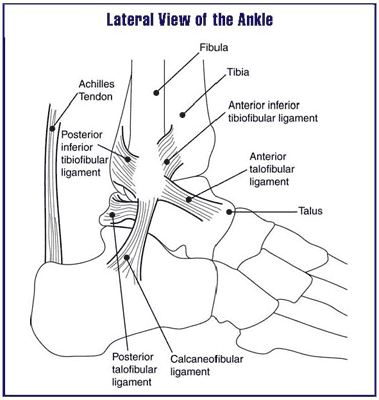
Dr. Timothy Young, a Board-Certified Foot Surgeon, Discusses Insertional Achilles Tendon Problems
Especially very large areas of calcification with men. Although women can get a condition that similar but different called a Haglund deformity. In this case it is the bone on the posterior aspect of the calcaneus that protrudes and can be aggravated by the adjacent Achilles tendon and not intratendon calcification. In the early stages this is very treatable. As time goes on and there are large areas of calcification, they can cause chronic problems. As I mentioned, in the early stages this response to some of the classic treatments for Achilles problems. That means a special brace, orthotics to decrease the workload and side to side mechanical shearing of the tendon at the insertion point, calf stretching and related treatments, and shockwave therapy. The later stages the same treatments are often still helpful, but they may not offer full relief. These are the individuals that often require surgery. The surgery involves access to the back of the Achilles insertion point with removal of the calcific portions and then reattachment of the tendon itself. The healing process for this can be similar to an Achilles rupture. There are new anchors that help to give more reliable surgical reattachment of the Achilles to the underlying bone.
If you are experiencing foot or ankle pain, give us a call at 425-391-8666 or make an appointment online today.
Dr. Timothy Young, a Board-Certified Foot Surgeon Discusses Tendinosis
The most effective treatments for this include prescription orthotics to address the mechanics and to reduce the mechanical shearing within the tendon. Calf stretching and a night splint can be very effective. KT tape is a useful adjunct for this problem. Shockwave therapy is extremely helpful for this condition. Some individuals will require surgery for this. This can involve removing some of the damaged portion of the tendon, and it can also involve lengthening the tight calf muscle with the gastrocnemius recession.
If you are experiencing foot or ankle pain, give us a call at 425-391-8666 or make an appointment online today.
Dr. Brandon Nelson, A Board Certified Physician & Surgeon, Discusses Heel Pain When You First Get Out of Bed
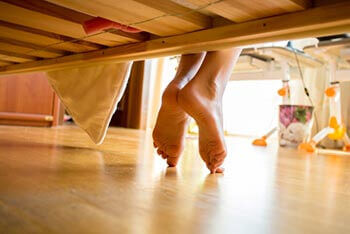
Waking up in the morning is hard enough. It becomes even harder when you have pain with putting your feet down. Morning pain or first step pain is usually an indicator of plantar fasciitis. I am going to briefly describe why we get it and what we can do to relieve it.
When we sleep at night our foot and ankle are in a plantar flexed position. This means our foot is bending forwards as well as our ankle. Positioning like this creates soft tissue relaxation. Specifically our Achilles tendon and plantar fascia have decreased tension on them. This allows tightening of our tissues and as we sleep the inflammation from the previous day settles in. Then as we place our foot on the ground to step out of bed we stretch and place load on the plantar fascia and the Achilles tendon. This causes pain and discomfort immediately and leads to a cycle of inflammation. There are a few tricks you can do to help this.
Morning pain can be alleviated and here are a few ideas to help;
1. Before you get out of bed, write the alphabet with your toes. This will help loosen up your tissue and stimulate blood supply and lubrication of those tendons and fascia.
2. Stretch, start with stretching in bed work on your posterior chain. It can be quite helpful to stretch your Achilles and your fascia.
I do think it is important to seek a physician before starting any of these options. It is essential to get a proper diagnosis and treatment plan. If you are having heel pain I can help. If you are experiencing foot or ankle pain, give us a call at 425-391-8666 or make an appointment online today.
Sincerely,
Dr Brandon Nelson, A Board Certified Physician & Surgeon, Discuss Heel Pain and When to See A Physician

Heel pain is by far the most common pathology I see in the office. It is so common among adults it is estimated that 1 out of every 4 currently are experiencing heel pain. It is also postulated that 60% of all adults will have heel pain at some point in their lives. It is important to understand the causes of heel pain and when to seek professional help. The most common causes are plantar fasciitis, Achilles tendon issues and nerve entrapments or irritation.
Plantar fasciitis is by far the most common cause. It often is described as a dull ache or bruised sensation. This is usually on the bottom of the heel. Plantar fasciitis can be painful in the morning, first step pain, or after activities. One of the most common presenting symptoms is pain after any period of rest. Plantar fasciitis is an overuse injury and I recommend always seeking physician input on this one as you may develop tearing in the fascia with increased symptoms.
Achilles tendon issues can also present with pain in the heel or around the heel. The Achilles tendon is the thickest strongest tendon in the human body and it is constantly under load. It is therefore prone to developing issues especially in physically active individuals. The Achilles tendon type pathologies often have swelling or sharp shooting pains near the heel. Again this is one to seek help early as the average recovery of Achilles tendon issues can take 4-6 months.
Nerve entrapments of the heel or Baxter’s neuritis or tarsal tunnel syndrome often have burning or electrical type symptoms. There is a correlation with other nerve issues in the body like neuropathy or carpal tunnel or fibromyalgia. Nerve issues are an urgent matter and early intervention is key so do not wait on these ones. I recommend immediately making an appointment. The nerves usually require testing to identify and prevent long term damage.
If you are having heel pain I can help call and schedule an appointment today. Give us a call at 425-391-8666 or make an appointment online.
Sincerely,
Dr. Brandon Nelson, A Board Certified Physician & Surgeon, Discuss Heel Pain
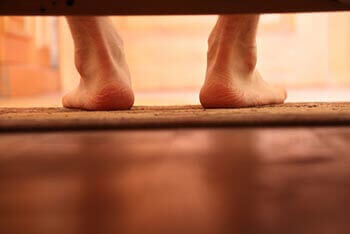
“Ouch my feet are killing me when I get out of bed!” This is what I used to say every morning. Heel pain can be so overwhelming and frustrating, especially if you are having pain with your first step in the morning. I remember those days so well and I could hardly bring myself to get out of bed. Plantar Fasciitis will affect about 60% of all adults at some point in their lifetime.
Heel pain or plantar fasciitis is by far the most common reason people seek care from a foot & ankle physician. Once a physician is involved normally recovery can be extremely fast. I specialize in treating heel pain and can get you back on your feet and on the road fairly quickly. The majority of patients I see are 50-80% better in less than 1 week. The fact I have suffered from it myself keeps me abreast to the latest and most effective techniques available to feel plantar fasciitis.
Not all heel pain is the same. There can be many other causes of heel pain that is why physician care is essential. An x-ray is warranted in order to rule out other causes and start the appropriate treatment. I find experience can be extremely valuable for heel pain care. There are quite a few outliers that can mimic plantar fasciitis. If you are suffering from heel pain I can help! Give us a call at 425-391-8666 or make an appointment online today.
Sincerely,
Dr. Brandon Nelson, A Board Certified Physician and Surgeon, Discusses Bunion Surgery and How He Can Help You Heal Faster
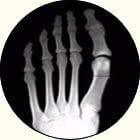
Bunion surgery involves one of two things. These are either cutting the bone and realigning the joint or realigning the joint and fusing bones together. The two different procedures depend on a whole host of variables like size of deformity, quality of bone, activities levels and age of the patient. Both of these types of procedures have excellent outcomes and are utilized extensively. Healing from either of these two procedures can be increased by concentrating on healing soft tissue and bone.
Soft tissue i.e. skin healing is part of the recovery process after bunion surgery. Incisions are required to access the boney correction and often soft tissue release. There are often incisions in joint capsules, release of ligaments and even release of tendons. Additionally, sometimes soft tissue balancing or plication of capsular tissues are required. Regardless, there are things you can do to heal skin faster after surgery. These include taking biotin, collagen and zine. Supplements are important to ensure adequate nutritional support happens and the building blocks of soft tissue requires certain minerals, peptides and proteins. A good diet and avoiding things like alcohol and Tobacco is important as well for both skin and bone healing.
Bone healing also can be increased with dietary supplements. I recommend Pro-bono for all my post-op patients. This supplement is extremely powerful in healing bones and I often see recovery time decrease by 1-2 weeks. Another tool that can be helpful is a bone stimulator. These are devices that help the body produce bone. Each device is a little different but they work by stimulating cells that produce bone. These usually require a prescription from your doctor. Lastly, make sure to follow your surgeon's advice. If you have a bunion I would love to help you decrease your post-operative healing course!
Sincerely,
Dr. Timothy Young, a Board-Certified Foot Surgeon Discusses Digital Foot Surgery.
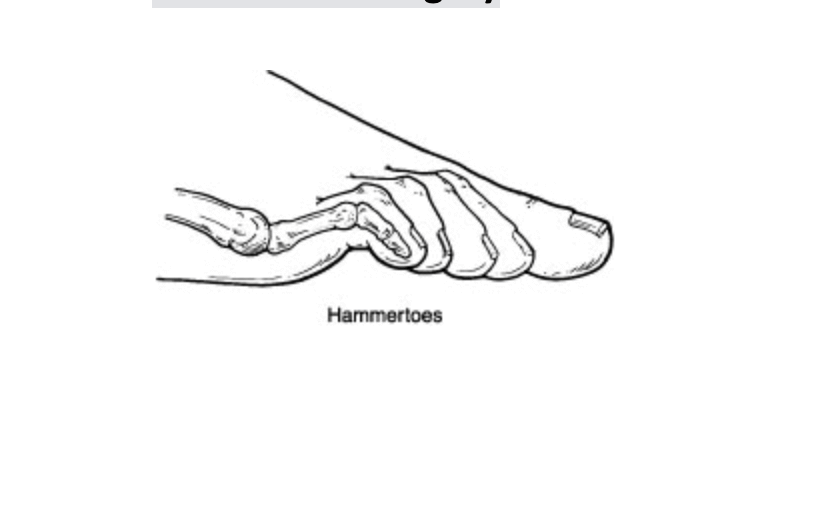
Dr. Timothy Young, a Board-Certified Foot Surgeon Discusses Digital Foot Surgery.
Sometimes during toe surgery, a pin will stick out the end of the toe. And other times, the pin will be buried or covered with skin. As we've discussed previously, it is common to use a K wire or pin during hammertoe surgery or other digital foot surgery. Often times the pin will stick out of the tip of the toe and be visible. When this is done it is very easy when the time is appropriate, for your surgeon to remove the K wire without making an incision in your toe. The advantage to having the K wire covered with skin or buried is that there is no direct pathway for bacteria to travel from the pin into the toe.
Therefore it is okay once you incision has healed to get your foot wet with the buried K wire, but that is not possible when it sticks out of the toe. Also the K wire can be left in this buried position for a longer period of time without pin track irritation or infection. The disadvantage of a buried K wire is that removal will require a minor procedure to remove the pin. Sometimes because there is such a thin fat pad at the tip of the toe, it's difficult to get enough tissue or skin to properly.
If you are experiencing foot or ankle pain, please give us a call at 425-391-8666 or make an appointment online today.


